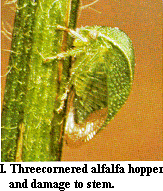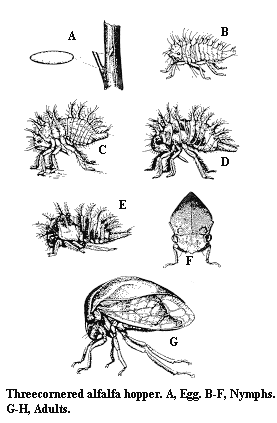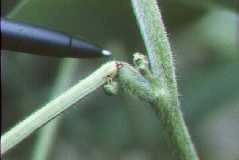Threecornered Alfalfa Hopper
go.ncsu.edu/readext?202041
en Español / em Português
El inglés es el idioma de control de esta página. En la medida en que haya algún conflicto entre la traducción al inglés y la traducción, el inglés prevalece.
Al hacer clic en el enlace de traducción se activa un servicio de traducción gratuito para convertir la página al español. Al igual que con cualquier traducción por Internet, la conversión no es sensible al contexto y puede que no traduzca el texto en su significado original. NC State Extension no garantiza la exactitud del texto traducido. Por favor, tenga en cuenta que algunas aplicaciones y/o servicios pueden no funcionar como se espera cuando se traducen.
Português
Inglês é o idioma de controle desta página. Na medida que haja algum conflito entre o texto original em Inglês e a tradução, o Inglês prevalece.
Ao clicar no link de tradução, um serviço gratuito de tradução será ativado para converter a página para o Português. Como em qualquer tradução pela internet, a conversão não é sensivel ao contexto e pode não ocorrer a tradução para o significado orginal. O serviço de Extensão da Carolina do Norte (NC State Extension) não garante a exatidão do texto traduzido. Por favor, observe que algumas funções ou serviços podem não funcionar como esperado após a tradução.
English
English is the controlling language of this page. To the extent there is any conflict between the English text and the translation, English controls.
Clicking on the translation link activates a free translation service to convert the page to Spanish. As with any Internet translation, the conversion is not context-sensitive and may not translate the text to its original meaning. NC State Extension does not guarantee the accuracy of the translated text. Please note that some applications and/or services may not function as expected when translated.
Collapse ▲Threecornered alfalfa hopper, Spissistilus festinus (Say)
Family: Membracidae, Order: Hemiptera
Adult – This green, wedge-shaped bug ranges from 6.0 to 6.5 mm in length. The male is slightly smaller than the female and has a red or orange stripe on its “shoulders.”
Egg – The white, oblong-oval egg is 0.9 to 1.3 mm long. It is slightly larger at one end, that end having a rough surface.
Nymph – The straw-colored, wedge-shaped, and heavily spined nymph has white legs, antennae, eyes, and abdomen. The mature nymph is active and about 4.6 mm long.
Distribution – Threecornered alfalfa hoppers occur as far north as Canada, but they are an occasional or potential problem only in the southern United States and in northern Mexico. They are prevalent from southern California to North Carolina, usually in early soybean plantings.

Host Plants – Threecornered alfalfa hoppers prefer leguminous plants such as alfalfa, soybean, bean, cowpea, and sweet clover. Other plants occasionally infested include tomato, melon, wheat, barley, oat, Bermuda grass, and Johnson grass, as well as some trees and shrubs.
Damage – Alfalfa hopper damage may be detected from the seedling stage and into mid-season. Both the adults and nymphs feed on the soybean plant by piercing the main stem, branches, and leaf petioles and sucking sap. Typically an insect will repeatedly feed at the same location on the stem, but ring the stem or petiole. This feeding cause a swollen, callused spot which is weak and will break during windy conditions. Lodging of the mainstem or aerial stems is what causes the farmer to be concerned. However, in North Carolina this damage is not regarded as important. Nymphs and adults weaken the lower stem by piercing it with their needle-like mouthparts and extracting plant juices. As a result, lodging and breaking usually occur weeks after attack. There is some evidence that if damage is randomly scattered and occurs before bloom, in an optimum stand, reduction of at least 25 percent may be necessary to reduce yields. However, these pests rarely cause economic damage in North Carolina.
Life History – Threecornered alfalfa hoppers overwinter as eggs in plant tissues or as adults protected by clumps of grasses. Young nymphs from overwintering eggs and overwintered adults begin feeding on weedy plants along field borders in the spring. During May or June, they migrate to soybean seedlings. Females then deposit 30 to 40 eggs, singly, in host plant stems. Nymphs hatch from the eggs 2 to 6 weeks later. They feed for 3 to 10 weeks before fifth instar nymphs molt into adults. On the average, 50 days elapse between egg deposition and adult emergence. The adults are strong flyers and readily migrate to new fields. Although the biology of this pest has not been studied in North Carolina, there are probably at least two generations each year.
CONTROL
Damaging infestations of the threecornered alfalfa hopper can be avoided by destroying weedy borders around fields and by seeding a little more heavily. The first practice eliminates overwintering sites from which the bugs will migrate to soybeans. The second practice reduces the importance of the loss of a few plants.




